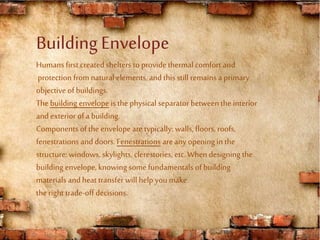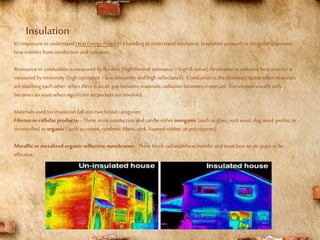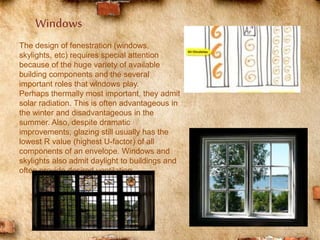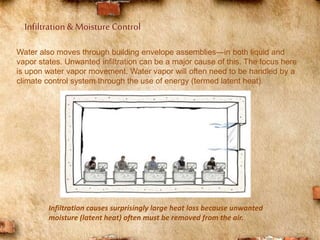The document discusses building envelope design strategies for different climate types. It explains that the building envelope includes walls, floors, roofs, windows, and doors, and provides protection from external elements. The key components of building envelopes are described for arid, tropical, cold, and mixed cold/hot climates. Specific strategies include using thermal mass in arid climates, maximizing shading and ventilation in tropical areas, emphasizing insulation in cold climates, and incorporating features like overhangs and thermal mass in temperate zones. The document also covers topics like insulation materials and properties, reducing thermal bridging, and designing high-performance fenestration.

























